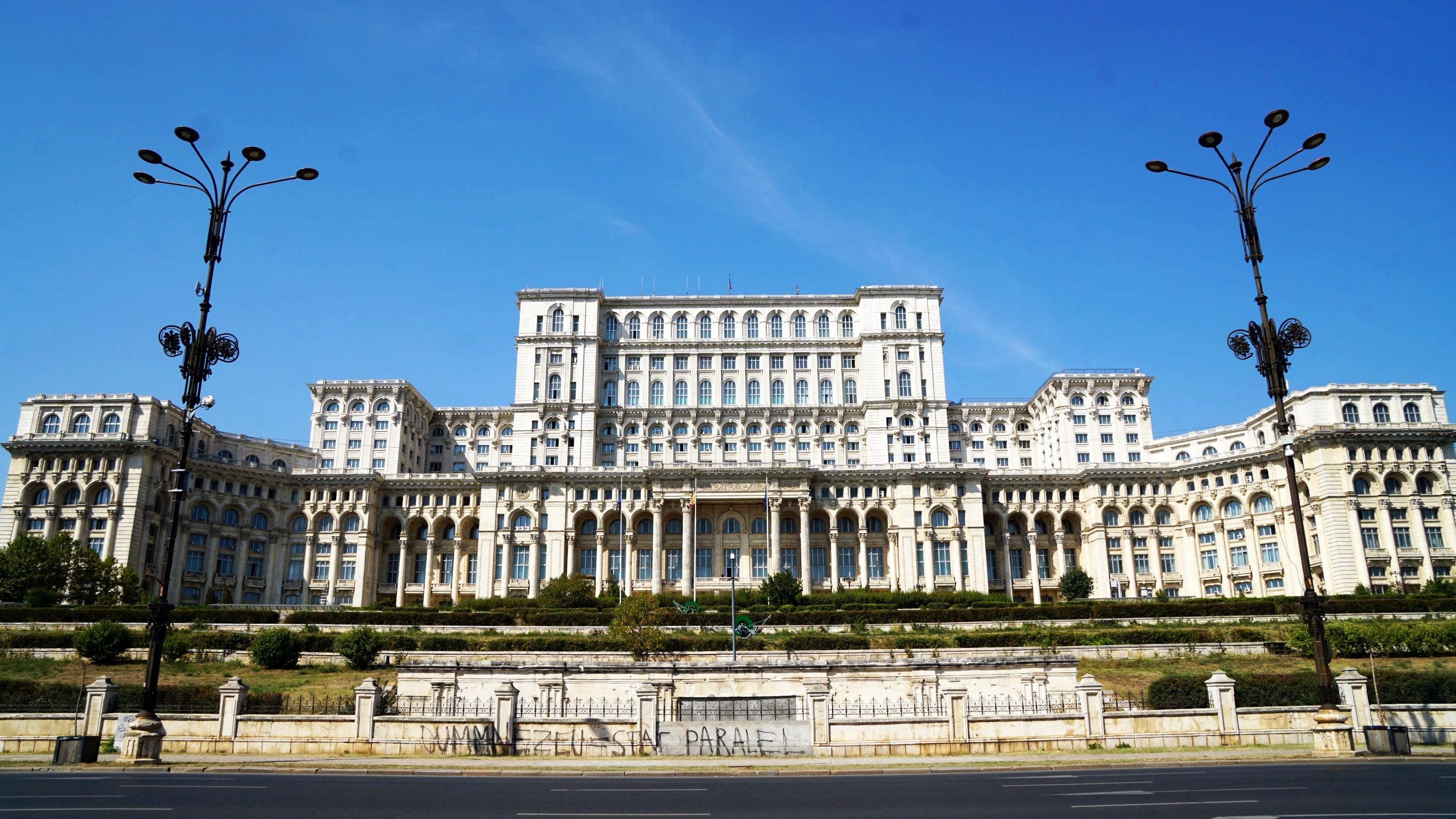Far more pleasant than expected, if with a rather spread out and variable built environment, Bucharest had plenty to fill a few days. There are some excellent, if exhaustingly huge, museums and art galleries, and many attractive churches and buildings.
The Village Museum was a good place to start my travels in Romania, as Romania has been brought to Bucharest, in the form of hundreds of vintage buildings relocated from around the country. Nearly 85 years old, it is larger than any similar museums I’ve been to in Norway, Sweden, Ireland, New Zealand and the UK, though few of the building interiors were open unfortunately. There are some wonderful carvings, thatched roofs, and beautiful wooden churches, all set in a pleasant spot by Lake Herastrau.

















An unexpected sight was this cat and bird sitting comfortably inches apart.

The neighbouring Herastrau Gardens are one of the larger parks in Bucharest, a very leafy and pleasant place to wander around, where I wasn’t expecting to find Mark Twain!


Just outside the park the Arch Of Triumph is similar in looks, and identical in function, to the more famous Arc de Triumph in Paris, I.e. it’s a giant roundabout.

A highlight of Bucharest was visiting the House of Ceausescu, the sickeningly luxurious private home of the Ceausescus. Only opened to the public a few years ago it somehow survived the 1989 revolution intact, and now provides a fascinating insight to the bubble in which they lived, quite different to the rest of the population of Romania. The tour builds from the living areas to the bedrooms of the Ceausescus and their three children, expensively decorated and furnished.





It then gets ridiculous with an indoor garden, treatment rooms, and a huge swimming pool surrounded by mosaics that took two men two years to complete.









Visiting Art Museum Zambaccian helped break up the long walk back toward the centre of town. It is home to a nicely presented collection accumulated by a wealthy Armenian businessman of Romanian and Western artists including Picasso, Cézanne, Renoir and Matisse.


The Museum of the Romanian Peasant is apparently one of the top museums in Bucharest. Unfortunately when I visited in September 2019 it was half way through a three year renovation programme, so I only got to see the grand facade, and behind it a wooden church contrasting with a modern office building.


There are so many churches and monasteries in Bucharest, I visited 25 while there, that they will be covered in a separate post, but here’s a taster.


The National Military Museum was far better than expected, and consistent with the rest of the museums and galleries I visited in Bucharest, far larger as well, they’re all huge! It had one of the most comprehensive and well displayed collections of arms and uniforms across the years that I’ve seen, though lacking explanatory text unfortunately.







A pair of staircases were unexpectedly exciting.

Outside were more weapons, vehicles and buildings to explore.







The Art Collections Museum was home to some wonderful pieces from the East.









Again the collection was vast, when I thought I’d finished I found another staircase and learnt that I was only half way through.
The collection of the National Museum of Art of Romania was possibly even larger, the building certainly was, housed in the former Royal Palace. The Stairs of the Voivodes were quite spectacular, and somehow survived a devastating fire in 1926.








The most interesting gallery was the Romanian Medieval Art, not normally my favourite period but there were some stunning works, including a series of wonderfully preserved frescos removed from the cathedral in Curtea de Arges in 1883.


Opposite the National Museum of Art is the somewhat barren Revolution Square (Piata Revolutiei), home to the 25m high Memorialul Renașterii, known locally as the “Olive on a Stick”.

The Romanian Athenaeum is sizeable neoclassical circular auditorium built in 1888, which I expect would be a wonderful place to see a concert.

Macca-Vilacrosse Passage is a covered arcade built in 1891.


The Palace of the Deposits and Consignments is one of a decent number of attractive heritage buildings in Bucharest, that helped it gain a reputation as the Paris of the East.






Unfortunately there are even more buildings like these, largely a legacy of the Communist era. They’re also historical important if less appealing to the eye.






The Romanian Kitsch Museum tries hard to be quirky, but sadly wasn’t that interesting.



The Bucharest Municipality Museum is housed in palace built in the 1830s. Inside is a nicely presented history of the city.



The underwhelming Bucharest Botanic Gardens were founded in 1860 across the road from the Cotroceni Monastery. The highlight would have been visiting the greenhouses, that in part date from 1891, but they were closed when I visited.




To end with the second largest building in the world, the epic Palace of Parliament. Started by Ceausescu in 1983, it wasn’t finished until 1994, five years after the revolution. Involving 700 architects and 20,000 workers, the whole thing was built with materials from across Romania, particularly from Transylvania.







The challenge since has been how to usefully fill over a thousand rooms. It is currently running at about 80% of capacity, hosting the Romanian Parliament, businesses, and conferences. There are multiple tours held daily to see the largest and most ornate rooms. It was an insane use of the country’s resources, but some of the rooms are quite breath-taking in their scale and decoration.










Leave a Reply